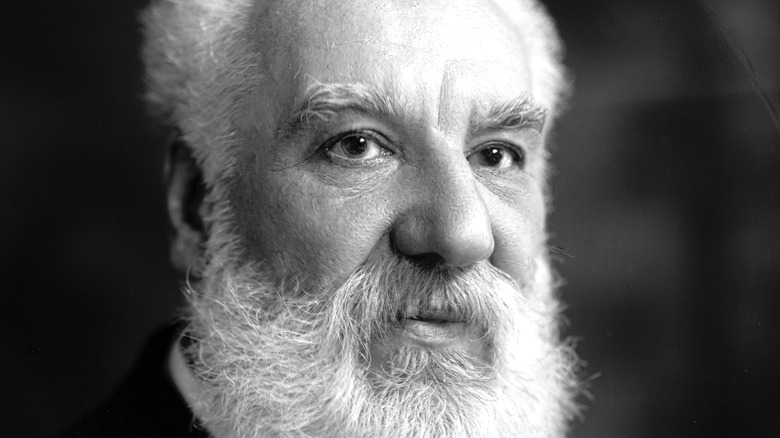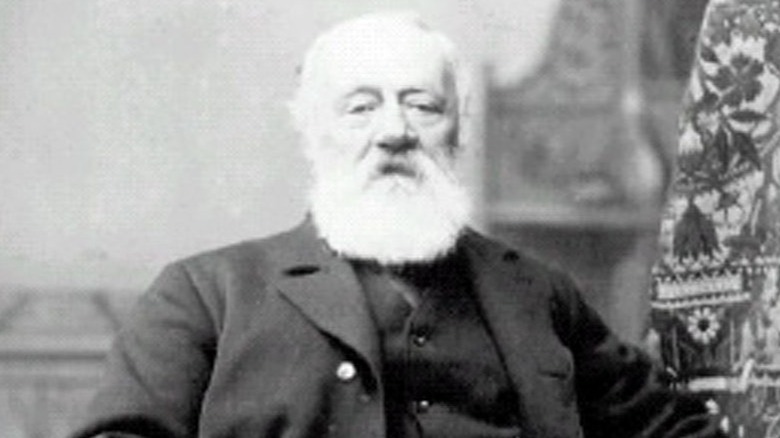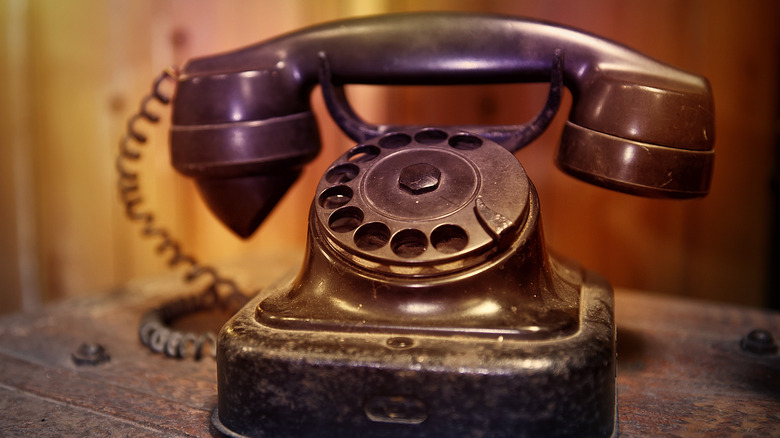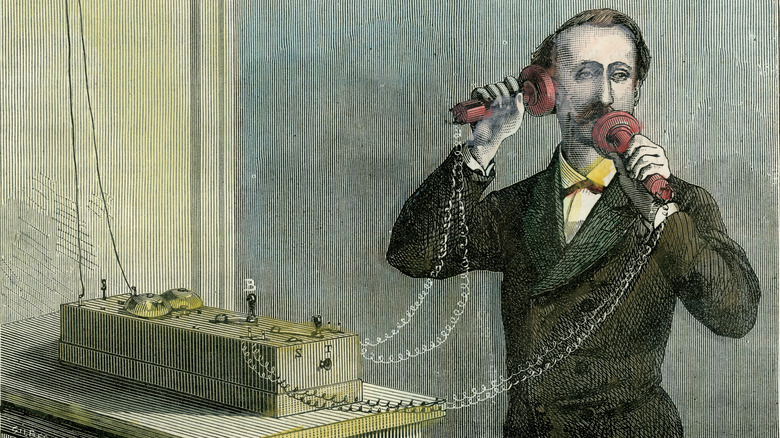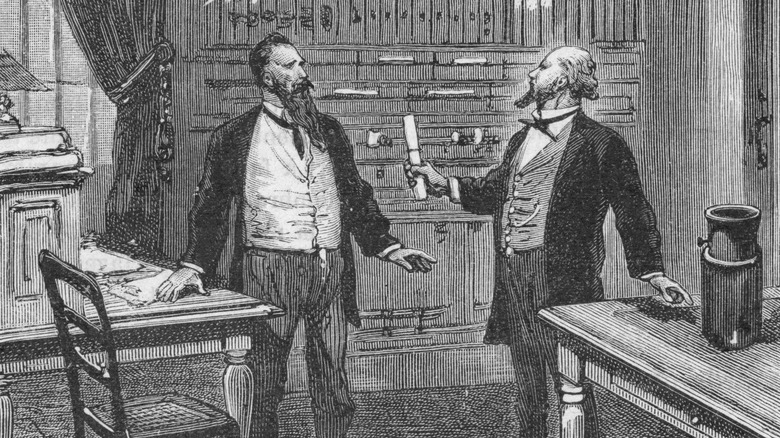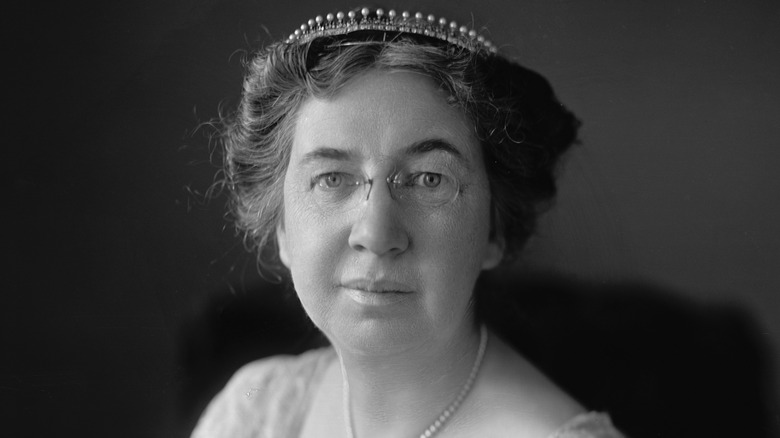The Controversy Behind The Invention Of The Telephone
You may think you already know the answer to this easy question: Who invented the telephone? The common answer taught in school is, of course, Alexander Graham Bell (via Britannica). Born in 1847, he grew up surrounded by family and acquaintances who were deaf or hard of hearing, and he later married a woman who was deaf. So he had a vested interest in creating technology that would re-invent communication.
Bell created a photophone that transformed sound using a beam of light, as well as a graphophone, which could record five minutes of conversation, according to The Franklin Institute. But his most well-known invention was the telephone.
On March 10, 1876, Bell tested out his telephone prototype with his assistant, Thomas Watson (via Ericsson). Bell called him and said, "Mr. Watson, come here. I want to see you." With that first call, the telephone worked perfectly, and that June, Bell displayed the new gadget at the 1876 World Exhibition. By 1877, Bell had refined his telephone model and founded The Bell Telephone Company.
Was he really the inventor?
Inventor Alexander Graham Bell went into the history books as the man who invented the telephone (per Ericsson). But it wasn't actually that simple — and the controversy surrounding the telephone lasted for more than a century.
Per Famous Scientists, inventor Antonio Meucci moved from Italy to Cuba and finally settled in Staten Island, New York. He ran a candle factory and a brewery, but neither made him much money. In his free time, Meucci had a basement laboratory where he worked on at least 30 kinds of telephone prototypes from the 1850s to 1870s. He would hook his phone models from the basement up to his bedroom several floors above, so that he could easily call his wife, whose arthritis limited her mobility.
But the success of Meucci's "talking telegraph," as he coined it, hit a roadblock by 1871. Meucci's candle factory went out of business. The same year, he was badly burnt in a steamship fire (via The Guardian). Regardless, he did try to claim his invention as his own idea.
The patent issue
Per The Library of Congress, Meucci made no legal claim of his invention until 1871, when he filed a caveat, which is a declaration that an idea exists, but which doesn't hold the same legal power as a patent. Working with several other men, he formed the Telettrofono Company based around his "sound telegraph" (via Famous Scientists).
Historians have also noted that while Meucci did actually file his caveat before Alexander Graham Bell, he didn't reference electromagnetic sound transmissions like Bell's patent did. Meucci's caveat expired in 1874, and he neither renewed it nor patented his idea. As seen on the website of the United States Congress, Meucci began living on public assistance funds and couldn't afford the patent fee. If he had paid it, Bell could have never patented the same idea.
The controversy grows even more complex from here. Apparently, Bell had worked on his own experiments in the same laboratory as Meucci in prior years, where he would have had access to Meucci's work.
A third telephone inventor
In a series of unfortunate events, Meucci sent two working prototypes to Western Union, but they mysteriously lost the models and they were never returned to him (via The Guardian). Meucci sued Bell, and the case made it to the Supreme Court. Meucci alleged that Bell had committed fraud, and the case was about to go forward. But the Italian inventor died in 1889, ending his legal strife with Bell.
According to Congress, Meucci's contributions to the telephone were largely forgotten until around 2002, when the United States House of Representatives created a resolution to celebrate his role in its creation. And Meucci isn't even the only person who is credited with the idea of the telephone (via Ericsson).
Per Ohio History Central, Elisha Gray was another inventor who had a telephone idea really similar to that of Alexander Graham Bell. Gray created 70 inventions throughout his life, and one was the musical telegraph, which is among the first electronic musical instruments ever made.
Drama at the patent office
According to Ericsson, Bell and Gray not only had similar ideas, but they submitted their patents on the exact same day, February 14, 1876. Both Gray and Bell sent their legal representatives to the patent office to file their paperwork (per The Library of Congress). Bell's lawyers were the fifth in line that day, while Gray's legal team was much further back in line, in 39th place. So Bell was awarded the patent, and Gray was out of luck.
Per Ohio History Central, Gray and Bell battled it out in the courtroom for years. Lawyers showed that the two men had drawn very similar sketches of the phone. Gray's legal team claimed that Bell had seen specs of Gray's ideas and basically stole them, accusing Bell of fraud (via Proceedings of the IEEE). The Library of Congress reports that Gray's lawyers even tried to claim that the patent office itself was to blame.
Letters from the past reveal new information
But it's possible that great minds really do think alike. According to Proceedings of the IEEE, Bell drew out a diagram showing how people would use the telephone at least 44 days before Gray's first telephone sketch. Another piece of evidence was a letter from Bell's fiance, Mabel Hubbard, in which she mentions Bell working frantically to add the liquid transmitter idea to his patent at the last minute. She penned the letter about a month before Gray submitted his own ideas.
Hubbard's letters cleared her husband of the fraud allegations. There were no hard feelings between the two inventors — Bell wrote that he held Gray in high regard, and thought they could have been friends if it weren't for their pesky legal troubles. Like Meucci, Gray's contributions to the telephone invention were finally recognized in 2002, many years after his death, in the Italian newspaper "La Repubblica" (via The Guardian).
